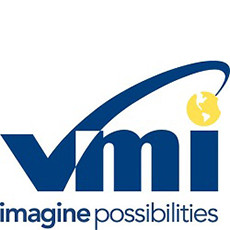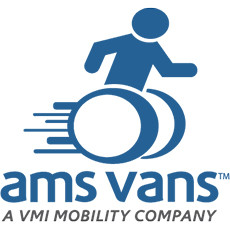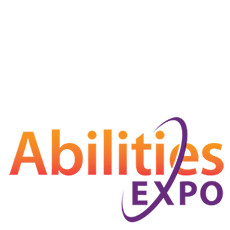
MobilityWorks
Accessibility for all: Helping people connect with who and what matters most
Searching...
No results found. Please try modifying your search.
My name is Erin. I’m living with a rare, progressive neurological condition called Hereditary Spastic Paraplegia (HSP)—a disease that causes my brain to send mixed signals to my legs and feet. As the nerves degenerate, my muscles get confused. They may tighten (called spasticity), weaken, or contract uncontrollably (called Dystonia), which is painful and disabling.
My Dystonia is especially severe—my feet twist inward at 90 degrees, causing intense spasms that can last for hours and cause me to fall suddenly. I’ve lived with this for over 50 years, and most doctors have never even heard of it. I’ve been misdiagnosed with Parkinson’s, Charcot-Marie-Tooth, and other disorders before finally getting genetic confirmation of HSP in 2015.
Because of the spasms and nerve damage, I’ve lost feeling in my feet, and I can no longer drive safely. I was told to stop driving until I can get hand controls installed in my vehicle. I desperately need a vehicle I can safely operate—because right now, I have no safe way to get to medical appointments, specialist visits, or even basic necessities. And the person I depend on for transportation—my spouse—refuses to drive me, leaving me isolated and trapped.
This is about more than just mobility. It’s about survival.
For over two decades, I’ve lived in a controlling and emotionally abusive marriage. My spouse controls the money, denies my medical needs, and has refused for years to follow through on promises like getting my car adapted, making the house handicap accessible, or even helping with basic transportation. I’ve been told I’m a burden, that I need to “marry a millionaire,” and that my health problems are “my fault.”
I’ve tried to leave. But I have no income due to my disability, and every time I try to get out, I’m pulled back in by empty promises. Since 2014, even my doctors have urged me to go to a domestic violence shelter. But in my state, accessible shelters don’t exist. I’ve tried calling many times and always get told to keep calling back. Years later I learned I can’t be on a controlled medication and I don’t meet their disabled criteria even tho I can get them any documentation they need.
In November 2021, I hit my breaking point. I knew I had to get out. But without a functioning car I can drive independently, I’m stuck.
What I Need
To escape this situation and regain my independence, I need:
$31,969 for adaptive hand controls to safely drive again
$45,681.27 to pay off the vehicle I currently depend on
Help with disability legal support and basic living needs while I try to start over
Every dollar will help me get closer to safety, medical access, and independence.
Why Help Hope Live?
I’m fundraising through Help Hope Live, a trusted nonprofit that manages medical fundraising and ensures all donations are used specifically for medical and related expenses. Your gift is tax-deductible, and Help Hope Live provides accountability and transparency—you’ll know your support is going exactly where it’s needed.
You Can Help Me Take the Wheel Again
I’ve lived with this disease since birth. My symptoms fully developed in 1992, and I’ve spent decades fighting to be seen, understood, and treated with dignity—especially within the military health system as a former Air Force spouse. I’ve been silenced, misdiagnosed, and left behind—but I’m not giving up.
Your support can give me freedom.
It can help me drive again.
It can help me escape abuse.
It can help me rebuild a safe, independent life.
From the bottom of my heart, thank you for reading, for caring, and for sharing. If you are unable to donate, please consider sharing my story.
If you have any questions or want to learn more, please contact Help Hope Live at 800.642.8399.
With gratitude,
Erin
A little more of my rare disease history: I’ve been diagnosed off/on with:
Monoparesis – 2020 to present by PCM
Dystonia 1992 – 1998 and 2020 – present
Neuropathy 1992-1998 – 2011-present
CMT – 1992-1997, 2010-2012, 2014-present
Autoimmune disorder 1996-1998
Connective Tissue Disease 2010 to current.
Parkinson’s 2004, 2011, 2014 – 2021
Congenital Muscular Skeletal Syndrome 2013
Hereditary Spastic Paraplegia 2015 to present
Spinocerebellar Degeneration 2015-present
T2/Flair Hypersensitivity 2015
Polyneuropathy 1994, 2011-2014 2017-present
CRPS type 2 – 2015 to present
Hi everyone,
I wanted to share an update as I prepare for two important neurology appointments on August 28, 2024, in Patchogue, NY—a 180-mile drive one way. It’s going to be a long, exhausting, and emotional day.
Because of traffic and the chance of getting lost (it’s only my second time driving there alone), I plan to leave five hours early. This will also be my first time using hand controls for such a long trip, which brings both relief and anxiety. Before getting them, I struggled badly—especially in stop-and-go traffic when I couldn’t feel the pedals. I’m grateful to have them now, but this journey is still difficult.
My Appointments:
10:30 AM – Gait Analysis
This test is not covered by insurance. The discounted rate is $100–$150 out of pocket.
Last time, my gait score was 15, which means I’m considered a high fall risk—something I already live with every day. I expect the same result again.
1:30 PM – Neurology Check-Up
This is my 6-month follow-up where I finally hope to get a refill of my medication.
The copay is $37.
The medication is delivered through Maxor mail order, but my spouse intercepts the mail and then gaslights me by saying I misplaced it. This has happened more than once. It’s terrifying knowing he can block my access to necessary medication just to maintain control.
Why This Is So Hard
I’m not supposed to be around stairs due to my high fall risk, yet I’m still forced to live in a home with stairs. I fall often—sometimes up the stairs—and I’ve stopped eating regularly because I have to carry food down from the kitchen while trying to balance myself on the walls.
I have less than $100 a week after paying his bills—for food, gas, and survival for both me and my special needs 20-year-old daughter, who has a history of traumatic brain injury (TBI) and PTSD. He controls all spending. I’m constantly questioned about every purchase. He decides what we can eat and blocks access to care.
My daughter needs mental health support but he refuses to let her go to therapy, saying it’s a waste of money. He cancels her doctor and dental appointments and keeps her isolated and confused. He’s put so much fear and guilt into her that she now self-harms and has suicidal thoughts, blaming herself for everything—just like I used to.
In October 2023, she had a complete breakdown. She had a knife to her throat and attacked me when I tried to call 911. He was texting and calling her nonstop, manipulating her in real time. I’ve never felt so helpless or terrified.
This home is unsafe. The emotional and psychological abuse is constant. Every day here makes my Dystonia worse—it triggers more spasms, more pain, more falls. But I can’t just leave and abandon my daughter, especially when he’s the one holding her back from healing.
Why I Still Need Your Help
Your donations have helped me get this far, and I’m endlessly grateful. But I still face overwhelming costs:
Medical appointments not covered by insurance
Gait testing and copays
Safe lodging when appointments are too far to do in a single day
Gas and tolls for these long drives
Mental health support for both myself and my daughter
Eventually, a safe and accessible home away from abuse
My biggest hope is to get out safely with my daughter, keep driving independently, and finally be allowed to heal. I’m still fundraising through Help Hope Live, so every donation is tax-deductible and goes directly toward medical and related expenses. I’ve come this far because of your kindness, and I’m asking—please keep standing with me.
Thank you for caring, sharing, and supporting me through this journey. I will keep fighting for my health, my daughter’s future, and a life free from control and fear.
With love,
Erin
Since getting my Subaru Outback back with adaptive equipment. The first thing I noticed was:
The seating wasn’t set up to accommodate tall people. I can no longer adjust the steering wheel it is set. Which is a hazard I can’t see the dashboard as the steering wheel blocks everything. I never know if the blinker is on/off. I can no longer see how many miles of gas I have left.
The feather light gas/break love it, but I can’t reach the blinkers. If you don’t have a good distance to let go of hand controls to use blinkers it’s a hazard.
The wipers is my other issue, in 2024 Subaru came out with automatic wipers when it rains. I’d love that setting vs trying to let go of Tri-pin or wait until a complete red light stop to turn on wipers then having to leave them on until it’s safe to turn them off again.
I had to buy an awkward armrest to rest my arm so I can put my hand in Tri-pin, but now my hand/arm is in awkward position. It really doesn’t accommodate me, but it somewhat help my arm tremors not be severe. I had to think outside of the box for my arm tremor. I had my training on a Dodge van where everything was so easy and I didn’t have the issues I’m having with my Subaru.
I’m currently trying to find some kind of light so I can see the light switch at night - I never know what my lights are set as I can’t see the dashboard due to steering wheel in the way.
So to have secondary switch that will allow me to control the following easier:
Left turn signal
Right turn signal
Horn
Dimmer
Wipers
Wash
Will cost me an additional $2,479.00 plus the cost of travel to Allentown, PA which is approximately a 2 hour drive each way. I’ve been trying to figure out how to come up with the money to drive safer even tho at times I’d really like to cut the steering wheel top part so I can see the dashboard.
I received my vehicle back from Mobility Works January 25, 2024. I’m currently in major debt, since apparently people think this is covered by insurance which it’s NOT. This is a major out of pocket medical expense which I can’t afford.
I’m currently trying to sell my Japanese massage chair just so I can afford this vehicle with hand controls. I have it listed in Facebook marketplace and EBay. I’m trying to find other things to sell since apparently no one donates to fundraisers for medical needs.
Craig from Mobility Works called me yesterday to schedule my fitting which is January 19, 2024.
[Vehicle Modification Journey: The Long Wait and Unexpected Setbacks]
On September 12, 2023, I dropped off my Subaru at MobilityWorks to have adaptive hand controls installed so I could drive safely again due to my neurological condition, Hereditary Spastic Paraplegia (HSP) and Dystonia.
Unfortunately, things didn’t go as planned.
By Thanksgiving, I was informed that my car had to be shipped to Independent Driving Systems in Texas because they ran into unexpected complications with the reduced-effort steering system. That was just the beginning.
On December 29, 2023, they told me the steering issue was finally resolved—but they had now run into another problem with the shifter, and wouldn’t be able to provide any updates until after the New Year.
These delays stretched my timeline by months, made it harder to access my medical appointments, and increased my financial burden—especially with no help from insurance or state assistance. I’ve had to shoulder this out-of-pocket while already trying to escape a harmful living situation and support my special-needs daughter.
Despite all this, I finally got my vehicle back on January 25, 2024—but it still needs additional modifications to be fully functional and safe for my needs. I’m deeply grateful to those who have supported me so far, and I’m still working hard to raise the rest of the funds to complete this journey.
Your support truly means the world to me.
With thanks,
Erin
To safely drive again, I require specialized adaptive vehicle equipment, including:
Reduced Effort Steering (RES): My steering column must be removed and shipped to Texas for modification.
Electronic driving controls
Push/pull hand controls with tri-pin and counterweight
Custom gear selector and park brake system
I completed my adaptive driver’s training in Johnstown, PA, which cost me $3,125 in total:
$575 for the evaluation
$2,550 for 15 hours of lessons ($170/hour) I also paid $600 for lodging, plus all gas and food while away. I passed my training using a Dodge van, which handled very differently from my current vehicle—a Subaru Outback.
My quote from Mobility Works:
Reduced Effort Steering: VRES – $21,515
Auxiliary Battery System: AUXBAT – $1,600
Backup Battery – $275
Labor for Battery Installation – $600
Steering Rack Removal & Shipping – $1,200
Gear Selector & Park Brake ECU: GSPB – $2,450
Standalone Gear Selector Install – $945
Gear Shift Cable Assembly – $210
Roundtrip Shipping to Texas – $500
Hand Controls: SureGrip Push/Pull – $1,705
Switch Control Button: SH103 – $160
City Mode Steering Add-On – $175
Tri-Pin Grip: SureGrip – $345
Tri-Pin Counterweight – $160
NMEDA Equipment Certification – $129
Total Cost Due Upon Delivery: $31,969
Once installation is complete, I’m required to undergo an additional 15 hours of training in my vehicle with the new controls before I can take the NJ driving test. My instructor, Jordan Brant (from Brant’s Driving School), must travel to Allentown, PA for this—his fee is $300 for travel and $170/hour for training, totaling $2,850
Why This Matters:
I’ve been fighting for nearly three years to get mobile again. Sadly, many people don’t understand the necessity of adaptive driving equipment or what it’s like to live with rare, invisible disabilities.
I live with a long list of disabling conditions—Hereditary Spastic Paraparesis, CRPS, Dystonia, Raynaud’s, severe osteoarthritis, and more—that affect my ability to walk, stand, or drive safely without adaptations. I experience:
Severe tremors and spasms in my hands and feet
Frequent falls and balance issues
Muscle weakness, swelling, and unpredictable pain
Limited fine motor control and grip strength
Despite clear medical necessity, most of my needs are not covered by insurance. My wheelchair requests have been denied for over 13 years. I even cook less because I struggle to lift pans. Acupuncture, reflexology, and custom medical foot care are some of the few things that give relief—again, paid entirely out of pocket. I’m maxing out credit cards with 33.99% interest.
Even more heartbreaking, my daughter Ja’Jandra may require her third elbow surgery. Her condition causes severe tremors in her right arm, and her NYC-based specialists don’t take insurance. Office visits are $600+, not including imaging or surgical costs.
I’m doing everything I can—selling items like my Japanese massage chair on Facebook Marketplace and eBay—because fundraisers have brought in very little. But I can’t keep taking on debt for medical needs no one helps cover.
I can’t afford to wait any longer. Every day I’m without full driving capability, I risk injury, isolation, and worsening health.
If you’ve read this far—thank you for understanding just a fraction of what it takes to survive with rare, invisible disabilities.
NDI Assistive Technology Loan Experience:
I explored the Assistive Technology (AT) Loan Program through the National Disability Institute (NDI), which claims to help individuals with disabilities secure affordable loans (from $500 to $30,000) to purchase assistive technology such as home or vehicle modifications. The loans are funded by the U.S. Department of Education, with interest rates as low as 4–6%, and are serviced by lenders such as New Community Federal Credit Union (NCFCU), Bryn Mawr Trust (BMT), or Spring Bank. Sounds good on paper—until you apply.
In reality, your loan application doesn’t go directly to the bank. Instead, you must first go through Laurie, a financial counselor at NDI, who decides whether to pre-qualify you and pass your package along. That alone raised red flags.
Although I applied for a loan—not credit counseling—I was lectured about a $33 gas charge that showed on my credit report (despite being paid off monthly). I’ve worked as a financial advisor and budget counselor in the military, so I understand how credit reporting works. My children—who’ve been authorized users on my credit cards since they were 16—have credit scores above 830. Yet none of that seemed to matter.
Then came a list of confusing and excessive requirements:
I was told I must list Spring Bank as a second lienholder on my car insurance, with proof of full coverage for the entire value of the car plus equipment ($79,919 total).
USAA had to fax confirmation that my adaptive equipment (classified as medical necessity) was fully covered.
I was told to mail my car title to Spring Bank to add a second lien—something most banks do not require or accept.
I had to provide a voided check, detailed income documentation, and every monthly or annual bill.
Despite all this, I wasn’t even pre-approved. The application never made it to a bank.
Laurie ultimately suggested I trade in my current vehicle—claiming its resale value would be zero due to modifications—and finance a MobilityWorks conversion van (which I don’t need). She insisted hand controls “shouldn’t cost more than $7,000,” ignoring the actual cost of my quote: over $31,000, which includes advanced equipment like Reduced Effort Steering and electronic gear selectors.
I’ve done my research. My equipment is transferable to a new vehicle if I ever choose to upgrade, and my car can be returned to OEM settings. Adaptive vehicles, when sold correctly, do retain resale value—especially if the buyer has similar needs.
After submitting over 100 pages of documents between June and August 2023, I received nothing but stress, misinformation, and delay. The disability community deserves access to up-to-date knowledge about assistive technology—not outdated assumptions and patronizing advice. After three months of trying to get through this process, I wouldn’t recommend NDI or Spring Bank to anyone.
Loan Rate Comparison (June 2025):
Here’s what I found on my own after a full day of research, without triggering hard/soft credit pulls:
Discover $40,000 @ 8.99% – $643/month for 84 months $30,000 @ 8.99% – $483/month for 84 months
USAA $35,000 @ 12.89% – $671/month for 84 months
American Express $35,000 @ 6.98% – $866/month for 48 months
NDI/Spring Bank (if approved) $34,819 @ 4% – $353/month for 120 months
MobilityWorks Financing Awaiting loan options this week
Why This Matters:
I launched a fundraiser to avoid predatory loans and stay out of further debt. My legs are deteriorating, and I avoid driving unless it’s for medical care. Getting access to safe, medically necessary equipment should not involve being interrogated, misinformed, or shamed for having a $33 gas charge on your report. People with disabilities deserve better.
Why I’m Fundraising for Vehicle Modifications and Adaptive Driving Support
I’m currently fundraising to raise $34,819 to install medically necessary adaptive driving equipment in my vehicle and complete the final steps to safely return to the road.
$31,969.00 – Quote from Mobility Works for medium-high tech hand controls and adaptive equipment.
$300.00 – My certified driving instructor’s travel fee to meet me at the installation center.
$2,550.00 – 15 hours of required follow-up adaptive driving lessons in my car at $170/hr to complete final certification.
Without these modifications, I can’t drive safely—and without safe transportation, I can’t access critical medical care or help care for my daughter, who has special needs due to a traumatic brain injury and orthopedic issues.
Why This Matters So Much Right Now
My medical conditions include:
Dystonia, which causes painful and unpredictable muscle spasms,
CRPS (Complex Regional Pain Syndrome),
HSP (Hereditary Spastic Paraparesis),
Severe Osteoarthritis (Grade 4 in my right knee),
Loss of motor sensory in both feet, and
Raynaud’s disease, making winter even more disabling.
I’ve already had a failed Brostrom-Gould ankle surgery, due to misdiagnosis and poor surgical judgment. After years of fighting, no orthopedic surgeon will operate on my legs again due to risk of permanent harm from my neurological conditions. I’ve lost dorsiflexion completely—meaning I can’t lift my feet—and have zero sensation in both feet.
Despite all this, I’ve been denied SSDI (Social Security Disability Insurance) repeatedly. I was told I “need to work in New Jersey for two years” to qualify—an alleged rule I cannot find documented anywhere. I moved here in 2010, and my military civilian doctor submitted paperwork for SSDI and Total & Permanent Disability (TPD) forgiveness back in 2011.
Since then:
I’ve submitted over 100 pages of documentation to try to qualify for the NDI Assistive Technology Loan Program—my application never even made it to a bank.
I’ve been passed around between 47 divorce lawyers, state legal aid, and my Congressman, whose intern told me my only option was to get divorced to qualify for help.
I’ve been living in pain, unable to drive, missing crucial specialist appointments, and off my Dystonia medication since May.
This is not sustainable.
Why This Fundraiser is Urgent
This isn’t just about driving. These modifications will allow me to:
Finally see my specialist neurologist in NY, who manages my Dystonia and prescribes my controlled meds.
Get a new gait analysis, as I’ve missed two required follow-ups.
Access long-overdue orthopedic consults at Hospital for Special Surgery (HSS) in NY.
Give my daughter transportation to her care team for her traumatic brain injury and deformed elbow, which still needs treatment.
Get back to participating in clinical research studies and medical trials for rare diseases—something I used to do regularly to help others like me.
As of today Brant’s Driving School submitted my script to Mobility Works. Now I wait for a quote.
Here are some details about my driving plans and lessons!
Since my lessons are in PA, once equipment is installed, I have to pay $170 per hour for the team to drive to MobilityWorks to inspect/make sure everything on the script is correct and at the right settings or if I need adjustments or to add anything. I was practicing on a Dodge where it had lights and wipers on the left, and I drive a Subaru which the turn signals and lights are on left but right side are the wipers.
He'll be adding push button vs my current gear shift - I don't have the strength to pull it down or push it up (Drive, Park, Reverse) on my Subaru which will add more cost. That's a big issue I've had since I bought it.
On the Dodge, it had an armrest for my arm while my hand was using a tri-pin. I don't have an armrest on my Subaru so they might have to adapt one for me. My instructor won't know until after the equipment is installed.
Once all the equipment is added to my car, my instructor has to come to NJ and verify the equipment and settings. If something needs to be added, the cost goes up for equipment and I have to pay him $170 per hour. If I need a refresher lesson since I was driving a Dodge during my driving lessons and I'll testing on my Subaru once all equipment is installed: I still have to pay $170 per hour. I already told them I want a refresher lesson, especially while he will be here for my final checkout with Mobility Works.
Once everything is cleared, I can take my New Jersey driving test. However, once I pass the test, my driver's license is coded differently, so I can no longer drive a normal car.
Medical Pedicures & Disability Reality: What $85 Bought Me
I finally caved and got a medical pedicure—not because I wanted pampering, but because my toenails were driving me over the edge. With Dystonia, Ataxia, and neuropathy, it’s not safe or easy to cut my own toenails, and finding a place that understands medical needs is nearly impossible.
After days of trying:
Two places refused to see me because of visible bruising on my ankles (which is from Dystonia spasms, not injury).
One finally agreed today—and charged $85 for just toenail clipping.
Let me be clear: this wasn’t some luxe spa treatment. I asked for:
Hot water: I got cold water instead.
Hard pressure massage: She barely touched me. I asked for deep tissue because I need strong sensory input to calm spasms—but got a feather-light rub instead.
No polish: She still wanted me to wear flip-flops, which I can’t safely walk in.
Hot stones & towels: I couldn’t feel them at all due to nerve damage.
Ankle bruising: She scraped it like dry skin, which made it worse.
For $85, nothing improved—my feet looked the same when I left, and I had to consciously think about walking straight because my legs felt thrown off from how weak they are. My shoes even felt too big.
Honestly? I’d rather go back to my $85 full-body reflexology session with hot stones and deep foot massage that at least helps with spasticity and pain. At least then I know what I’m getting, and I leave feeling like something actually worked.
This was my first and last pedicure like this.
Medical care—even basic hygiene support—shouldn’t be so hard, so expensive, or so misunderstood for people with neurological disorders and mobility challenges.
13 Years of Being Ignored by Military Insurance—Until Now
After 13 years of fighting with USFHP (military insurance), I was finally allowed to see a PM&R (Physical Medicine & Rehabilitation) specialist—something that was not even a covered benefit until April 1, 2023.
For over a decade:
I was denied access to NeuroRehab and PM&R, despite multiple conditions that clearly require it.
Over 70 doctors have written prescriptions for a lightweight, foldable wheelchair—and every one of them has been denied.
In 2013, I was issued a 51-pound non-folding transport wheelchair—completely useless for daily independence. I eventually gave it away to someone who needed it more than I could even use it.
Now that PM&R is finally covered:
This new doctor immediately recognized my need and ordered both a lightweight wheelchair and a power chair.
The power chair is due to my latest fall, which resulted in 3 tears in my shoulder, bicep, and elbow. I still can’t get an MRI approved to assess the damage fully.
I’ve lost function in my left arm, which affects my ability to perform daily activities safely or independently.
She’s also ordered gait therapy and bilateral AFOs (ankle-foot orthoses) because I’m a high fall risk with a gait score of 15.
But here’s the problem:
The only DME provider I’m allowed to use under my plan doesn’t know my rare neurological conditions and has repeatedly fabricated braces that actually increase my risk of falling.
The plastic AFOs they made broke during a Dystonia spasm, and they’ve never offered a suitable replacement.
Once again, I expect the wheelchair prescription will be denied—just like all the others.
I’m not asking for luxury. I’m asking for the basic tools to live safely and preserve my body.
This isn’t about comfort—this is about preventing more falls, dislocations, and surgeries I’ll never recover from. Every delay causes more permanent damage.
Brant's Driving School called me last week and scheduled me for 2 weeks, Monday-Friday from 10am to 4pm.
Evaluation is $575
Lessons are $170 per hour
The hardest part was finding lodging for those 2 weeks for a mobility room with roll-in shower.
Thank you to all who have donated!
Driving Lessons with Brant’s Driving School – Cost Breakdown
Since March 1, 2023, I’ve been in contact with Brant’s Driving School to begin training with adaptive driving equipment. I’ve spoken with Amanda, who helped outline the full costs and logistics involved.
Driving lessons are $170 per hour
If instructors travel to me, it adds $40/hour in travel fees
To keep costs lower, I plan to travel to them directly, which eliminates travel fees but adds:
Lodging expenses
Meals
And extended time away from home and caregiving duties
Why I’m Self-Pay:
Because my adaptive equipment and specialized training are not covered by insurance, I have no choice but to self-fund all of this, which is why I’ve started fundraising through Help Hope Live.
In total, between the cost of the equipment, driving lessons, instructor’s travel for final fitting, and temporary relocation, I am facing a total cost of $34,819.
Every dollar I raise goes directly toward giving me the freedom to drive again safely, attend medical appointments, and care for my daughter.
Driving Incident and Setback – February 14, 2023
On February 14, 2023, I traveled 1.5 hours each way for an adaptive driving lesson. I arrived early, and since my instructor had a cancellation, he asked me to observe his driving using the hand controls.
Unfortunately, while I was riding as a passenger, we were involved in a car accident. He attempted to turn left at a known blind spot, against his own training advice, and my side of the vehicle was struck. I’m grateful I wasn’t the one driving—because I never would have made that turn. I always wait until the road is completely clear.
That accident totaled the driving school’s van, ending my lessons with that provider. As a result, I’ve had to start over completely, now training with Brant’s Driving School in Johnson, PA, which comes with new costs:
$575 driving evaluation
$170 per hour for each lesson
Lodging and meals for up to 3 weeks while I train out-of-town
Because it has now been over a year since purchasing my vehicle, I’ve also lost my $1,000 Subaru rebate, which was contingent on having hand controls installed within a year of purchase—a deadline delayed by factors completely beyond my control.
Adaptive Driving Equipment Timeline and Setback Summary
October 13, 2022 I received initial quotes from Mobility Works for adaptive driving equipment totaling $30,000. After reviewing the specs and consulting directly with ColleBuilt and IDS (the manufacturing companies), they advised that I consider a horizontal steering wheel system, which may better meet my long-term needs and potentially prevent the need for future costly upgrades.
October 30, 2022 I experienced a serious fall down the stairs, injuring my left arm, hip, and leg. This forced me to temporarily stop my driving lessons and delay progress on equipment setup.
December 21, 2022 I resumed training with a horizontal steering wheel system. The new configuration immediately reduced strain on my arm and was a better match for my dystonia, intentional tremors, and fatigue. Previously, I was using a tri-pin steering wheel at 2 o’clock, but after about 30 minutes, my arm would begin to tremor and fatigue significantly.
February 7, 2023 I began training using a horizontal steering wheel with a knob, focusing on using my left hand for gas and brake.
The push/rock mechanism triggers my intentional tremors.
Pulling back for gas induces additional arm spasms. My instructor has continuously adapted lesson plans and techniques to accommodate my complex neurological challenges.
After months of evaluation, equipment trials, and provider consultations, the custom EMC driving system—which includes a horizontal steering wheel and electronic controls—is projected to cost approximately $70,000 based on the latest estimates. This setup is essential for my safety, independence, and ability to transport myself and my daughter to ongoing medical appointments.
Driving Evaluation with Moss Rehab – Long Awaited Milestone
March 2022 – Present I’ve been on the waitlist with Moss Rehab in Jenkintown, PA for a driving evaluation using high-tech controls. This evaluation is crucial to finalize the right adaptive equipment setup for my vehicle.
June 2025 Update Moss Rehab finally called—I’m next in line! Unfortunately, I’ve had to reschedule multiple times due to:
Conflicts with my kids’ school and work schedules
Not having a consistent or accessible ride to the facility
I’m now looking at using Uber, which is $85 one way, as my best option to avoid further delays and continue the process without being fully dependent on others. Even though it’s expensive, this evaluation is critical in determining what assistive technology I need to drive safely and regain my independence.
Why I’m Still Fighting for My Mobility and Medical Access
Car Delivered Early – Unexpected & Overwhelming I recently received my vehicle, earlier than expected, and realized my arm strength has significantly decreased since 2015. Although I was able to get medical tint for my UCTD, I still don’t have the adaptive controls installed, which I need to drive safely.
Spinal Cord Stimulator Complication In June 2022, I had back surgery to remove a dead spinal cord stimulator. I let it die in 2018 after learning the implant was part of an unauthorized project by a pain doctor who used me to test theories on spasticity without informed consent. It ended up worsening my Dystonia severely. It took years, but I finally found a new pain doctor who removed it.
Bracing, Falls, and Broken Equipment My new pain doctor wants me back in AFOs/KAFOs, but they’ve never helped me—they’ve made me fall more often. I’ve broken past braces during Dystonia spasms, and most DME providers recommended are out-of-network or make braces that simply don’t work for my conditions. He also prescribed a back brace, but with my fall history, it won’t prevent injury and may even worsen my instability.
Neurology Visit Critical – Patchogue, NY I’m supposed to see my neurologist in August, but I don’t have reliable transportation to get there. This visit is vital: my condition is worsening, and I desperately need a plan of care.
Frequent Falls and Functional Decline My balance has worsened drastically. If I sit or stand too long, it feels like my back is going to snap. Just recently, I fell three times in a row trying to get up and walk to my daughter’s room. It took me over 40 minutes crawling on the floor just to wake her up for volleyball. These aren’t rare incidents anymore—they’re becoming daily struggles. And I’m scared.
Loading Images
Got my hand controls about 7 or 8 years ago. Best of luck wish I could give more!
Katy Marturano
Make checks payable to:
Help Hope Live
Note in memo:
In honor of Erin Cruz
Mail to:
Help Hope Live
2 Radnor Corporate Center
Suite 100
100 Matsonford Road
Radnor, PA 19087
Donor preference is important to us. Please specify in writing if you wish for your name or donation amount to be kept private.

Subscribe to this campaign to receive updates.

Accessibility for all: Helping people connect with who and what matters most

Building leading-edge mobility products

One of the largest mobility dealers in the U.S.

Consult with specially-trained pharmacists, get your medications for pickup or delivery and more

All news, and all that matters to you

Your first step to optimized communications

The event for the disability community

Born to connect, empower and inspire the rare disease community.

A mobility dealer for wheelchair accessible vehicles and adaptive equipment